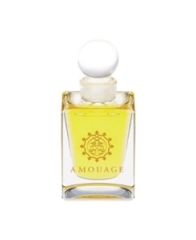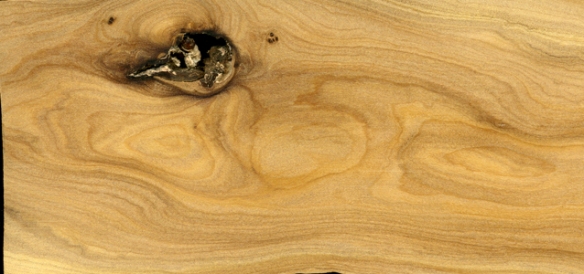Some of the most luxurious creations in the perfume world are rich Middle Eastern attars, and few people do it as well as the royal perfume house, Amouage. I recently had the chance to try Sandal, an lesser-known Amouage attar, thanks to the kindness of a reader of the blog, “Dubaiscents,” who generously sent me a sample. Sandal is a soliflore centered around one ingredient, and one ingredient alone: sandalwood.
Sandal‘s press description is provided by one EU retailer, Profumeria Pepos, and reads:
Unique and therefore absolute. Only one player dominates the heart of this attar, Sandalwood. Mystic wood celebrating the oriental cults. Aphrodisiac wood smelling the nights of love. Lonely lover’s skin is often sought to sublimate the Asian touch with its dry and velvety touce. Here, a maximum concentration of itself, was left alone to be admired in its absolute beauty.
Sandal is supposedly nothing but pure Indian sandalwood. It is one of my favorite notes, and I grew up in an age where all the fragrances I wore had copious amounts of the glorious Mysore wood. Rich, red, spicy, often a little smoky, creamy, and with a touch of sweetness, it was beautiful. Unfortunately, nowadays, true Mysore sandalwood is so rare and so astronomically priced in even the smallest quantities that it might as well be extinct for the purposes of perfumery. As regular readers of the blog know well, I’m a huge sandalwood snob, and I find the Australian kind to be significantly different. I can count the modern fragrances that include genuine Mysore sandalwood on one hand, as the smell is truly distinctive for me.
To my nose, Amouage’s Sandal attar smells like Australian sandalwood, and nothing like the Mysore variety that I grew up wearing in fragrances and oils. Sandal opens on my skin as green creaminess that smells exactly like buttermilk with the slightest, faintest tinge of sourness. The wood smells young and green, and doesn’t evoke the visuals of true Mysore sandalwood with its red-gold hues, rich spiciness, light smokiness, and sweetness. I recently received some oil from an Australian sandalwood plantation, and Amouage’s Sandal is almost identical to that on my skin. The only difference is that the Sandal lacks the occasionally medicinal touches, and is infinitely creamier. It’s beautifully soft and smooth, but it still smells green to me.
As a single-note oil, Sandal doesn’t change much on my skin. After a few hours, a lovely, extremely delicate, and light floral element creeps into the creamy woody smoothness. It has an almost a lemony undertone to it and, on occasion, smells a little like lemongrass. At no time is any of it spicy or smoked in feel. The attar wears very close to the skin, hovering perhaps an inch above at best in initial projection in the opening hour. It becomes a skin scent after about 5.5 hours, then fades away entirely at the start of the 9th hour.
I couldn’t find any blog reviews for Sandal, but there are brief assessments in some very old Basenotes threads. In one discussion dating back to 2010, a commentator found the sandalwood in the attar to be genuine Mysore sandalwood and described the smell like “coconut water.” He thought it was exactly like the old Mysore scents he used to wear in the 1970s. However, in an earlier thread from 2009, the two olfactory descriptions of the Sandal attar were different.
- I’ve sniffed Al Andalous and Sandalwood and both seemed to be very similar to other typical Middle Eastern attars of the same respective genres, with a fair dose of clearly synthetic ingredients. […] The Sandalwood attar was not unpleasant but not anywhere near the pure sandalwood oil.
- The Sandal is very medicinal, like a cough crop. That sounds strange but it’s gorgeous.
Amouage’s attars are not immune from reformulation or weakening, so I don’t know if the 2013 version that I tested has changed from the 2010 version of the Basenotes commentator who detected “genuine” Mysore sandalwood. All I can say is that, to my nose, Sandal has creamy buttermilk greenness, not the red Mysore spiciness, sweetness and smoke.
Sandal is pretty in its creaminess and, if one were not a sandalwood snob, would probably be very enjoyable to wear. For me, personally, however, I could not justify spending the amount of money asked by Amouage for such a green, buttermilk version of my favorite note, especially given the sillage. I tested the attar a few times and, on one occasion, asked a family member who loves Mysore sandalwood what they thought. It was only an hour after application, but they could barely detect the scent on my skin. I said, “it’s sandalwood,” to which they replied, “doesn’t smell like it to me.”
Sandal is cheaper than Amouage’s better known attars like Tribute and Homage, but they’re still not giving away. You can find the smallest size (12 ml) starting at $250 or €168, which is better than Tribute’s opening price of $370. It’s still quite a hefty outlay for a mere 12 ml of a soliflore with weak sillage. For me, personally, the glorious, fantastic Tribute blows it out of the water, but Tribute is a much more complicated beast and definitely not a soliflore. I also prefer the interesting, nuanced Al Mas and Asrar attars, but, again, it probably isn’t fair to judge a single-note fragrance by the standards of scents with more layers.
At the end of the day, price is always a subjective matter, as is probably the aromatic impression of Mysore wood in general. So if you’re looking for a creamy and pretty take on sandalwood, then you may want to consider Sandal. It’s not the easiest thing to find, but it’s not impossible either.




